1 min read
Webb’s First Deep Field (NIRISS Emission Spectra)
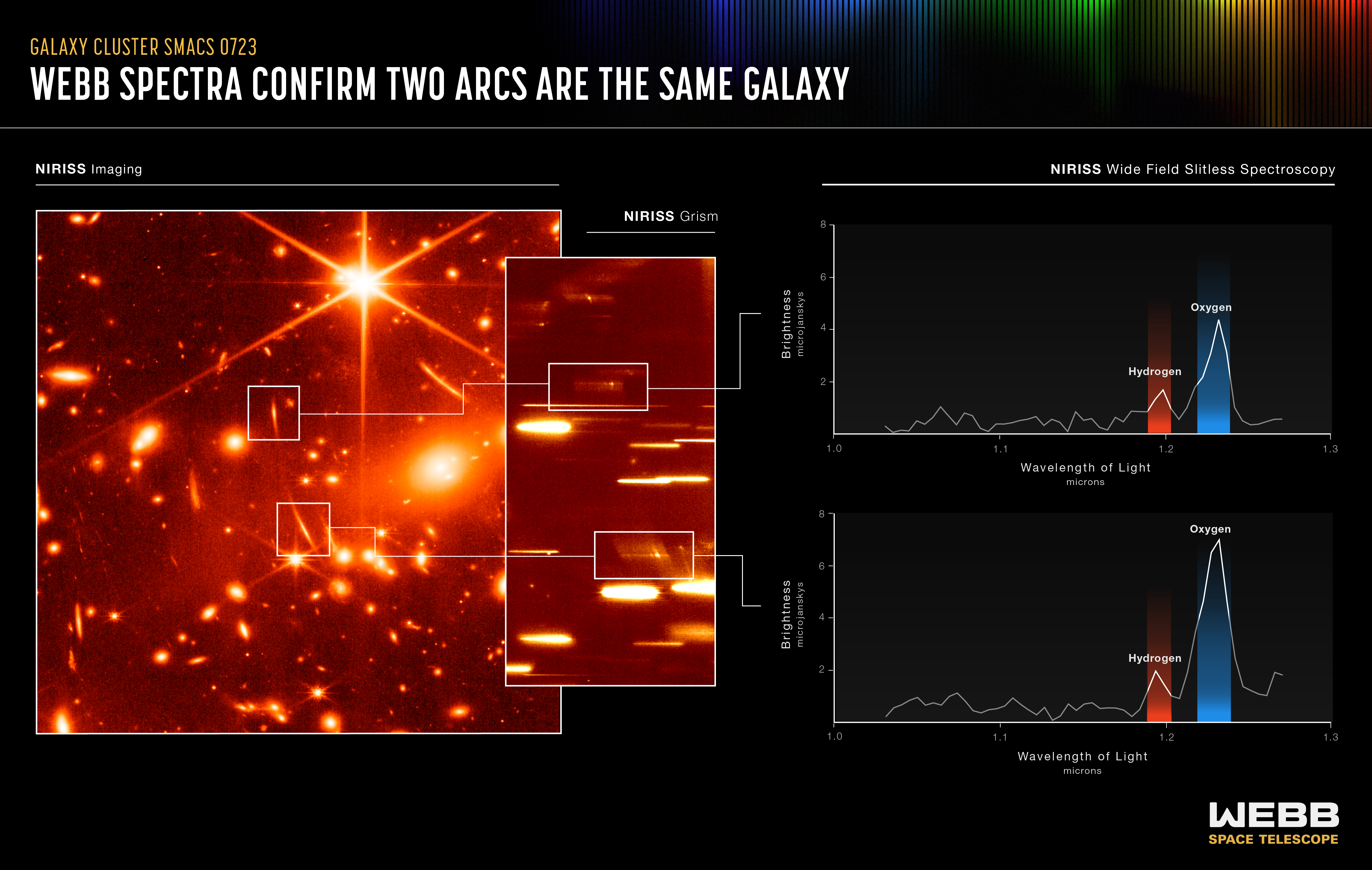
Want to go on a galactic treasure hunt? Data known as spectra from NASA’s Webb Telescope make it easy to find – and match up – cosmic prizes!
At far left is a near-infrared image of galaxy cluster SMACS 0723. A group of massive galaxies below and to the right of the bright central star have distorted, magnified, and mirrored many galaxies in this field.
By quickly examining the image at left by eye, it becomes clearer that one arc may be made up of two similar-looking galaxies. Their bright central regions match, despite their stretched appearances. These may be lensed galaxies – one galaxy that is mirrored in a second location. Are they the same? Researchers can’t be sure from the image alone – more data are needed to confirm a match.
Scientists do this by gathering spectra, which spread light out so they can fully examine an object’s makeup. Webb’s Near-Infrared Imager and Slitless Spectrograph (NIRISS), which gathers spectra of every object in any field it observes, was pointed at the galaxy cluster to gather more detail. A segment of the NIRISS grism image (an instrument that has a grating, or stair steps, on a prism), at center, shows how ionized oxygen and atomic hydrogen emission lines are distributed along the arc.
Next, the spectra from each of these two galaxies were plotted as graphs, shown at right, to reveal their compositions. The graphs, known as spectra, match, which indicates that these arcs are mirror images of the same galaxy. Webb’s spectra from NIRISS also quickly proved that light from both galaxies was emitted 9.3 billion years ago, further confirming they are one and the same.
Using Webb’s NIRISS is like opening a treasure chest overflowing with spectra. For example, this instrument can disperse the spectra along the image vertically and horizontally. Researchers can use both modes to untangle which lines match each source.
Every object’s image can be transformed into spectra like the two shown above. So even if researchers aren’t intending to study a particular galaxy in the field, they may make a surprise discovery.
For a full array of Webb’s first images and spectra, including downloadable files, please visit: https://webbtelescope.org/news/first-images
NIRISS was contributed by the Canadian Space Agency (CSA). The instrument was designed and built by Honeywell in collaboration with the Université de Montréal and the National Research Council Canada.
Extended Description and Image Alt Text
Extended Description
Infographic titled “Galaxy Cluster SMACS 0723, Webb Spectra Confirm Two Arcs Are the Same Galaxy; NIRISS Imaging, NIRIS Grism, and NIRISS Wide Field Slitless Spectroscopy.”
The infographic is divided into two parts, with reference images on the left and spectra on the right.
Left side: Reference images
A NIRISS Image is orange with a darker orange background, showing two long, arced galaxies toward the center. They are highlighted in white boxes, which extend to the smaller, horizontal image at the center, labeled NIRISS Grism.
The grism image shows the light of every object in this segment of the galaxy field spread out horizontally. White boxes highlight the two lines that match up to the stretched images of the arced galaxies at left.
Right side: Graphs
The right side of the graphic shows two line graphs. The galaxies pulled out in the two images at left are each plotted in a graph, one above the other. The two graphs are labeled NIRISS Spectroscopy.
Graph Axes
On both graphs, the y-axis indicates brightness in units of microjanskys. The values range from 1 to 8, with have tick marks every 2 microjanskys. The x-axis on both graphs is labeled Wavelength of Light in microns and begins at 1 and extends to 1.3, with markers for each tenth of a unit between.
Graph Data
On both graphs, the brightness of the galaxy at each wavelength is plotted with a jagged line. In the graph at the top, a labeled red shaded area indicates hydrogen just before 1.2 microns, with the line extending only to about 2 microjanskys. A slightly wider green shaded area that indicates oxygen begins just after 1.2 microns, where the line extends up to 5 microjanskys. In the graph at the bottom, hydrogen and oxygen are marked very similarly, except that the peak for ionized hydrogen extends to roughly 7 microjanskys.
Image Alt Text
Infographic showing an image with identical spectra of two arcs of light around the galaxy cluster SMACS 0723.
About the Object
- ConstellationConstellationOne of 88 recognized regions of the celestial sphere in which the object appears.Volans
About the Data
- Data DescriptionData DescriptionProposal: A description of the observations, their scientific justification, and the links to the data available in the science archive.
Science Team: The astronomers who planned the observations and analyzed the data. "PI" refers to the Principal Investigator.This image was created with Webb data from proposal 2736. It is part of Webb Early Release Observations.
The Early Release Observations and associated materials were developed, executed, and compiled by the ERO production team:
Jaclyn Barrientes, Claire Blome, Hannah Braun, Matthew Brown, Margaret Carruthers, Dan Coe, Joseph DePasquale, Nestor Espinoza, Macarena Garcia Marin, Karl Gordon, Alaina Henry, Leah Hustak, Andi James, Ann Jenkins, Anton Koekemoer, Stephanie LaMassa, David Law, Alexandra Lockwood, Amaya Moro-Martin, Susan Mullally, Alyssa Pagan, Dani Player, Klaus Pontoppidan, Charles Proffitt, Christine Pulliam, Leah Ramsay, Swara Ravindranath, Neill Reid, Massimo Robberto, Elena Sabbi, Leonardo Ubeda.
The EROs were also made possible by the foundational efforts and support from the JWST instruments, STScI planning and scheduling, Data Management teams, and Office of Public Outreach.
- InstrumentInstrumentThe science instrument used to produce the data.NIRISS
- Release DateJuly 12, 2022
- Science ReleaseNASA’s Webb Delivers Deepest Infrared Image of Universe Yet
- CreditImage: NASA, ESA, CSA, STScI
Related Images & Videos
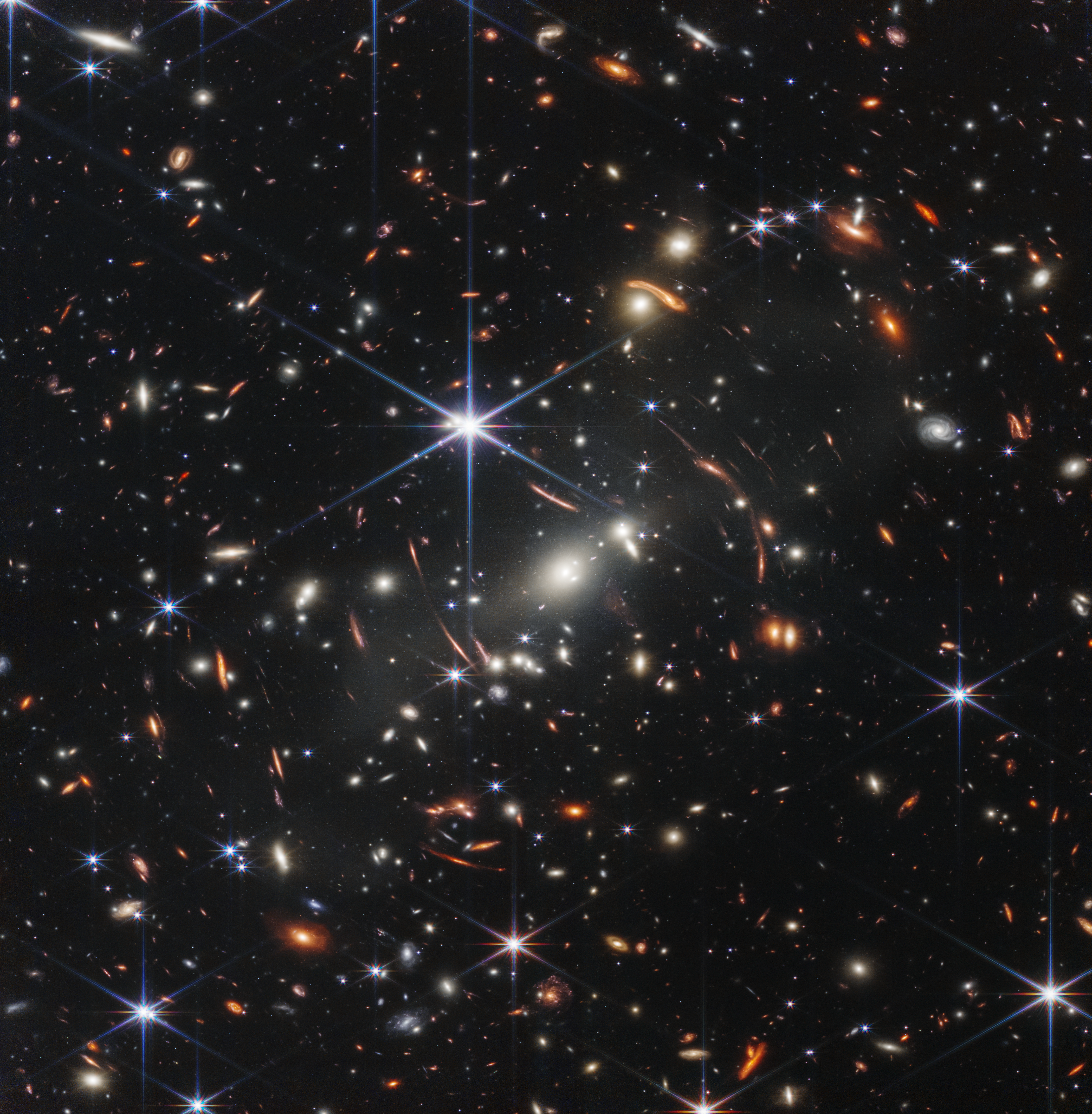
Webb's First Deep Field (NIRCam Image)
Thousands of galaxies flood this near-infrared image of galaxy cluster SMACS 0723. High-resolution imaging from NASA’s James Webb Space Telescope combined with a natural effect known as gravitational lensing made this finely detailed image possible. First, focus on the galaxies...
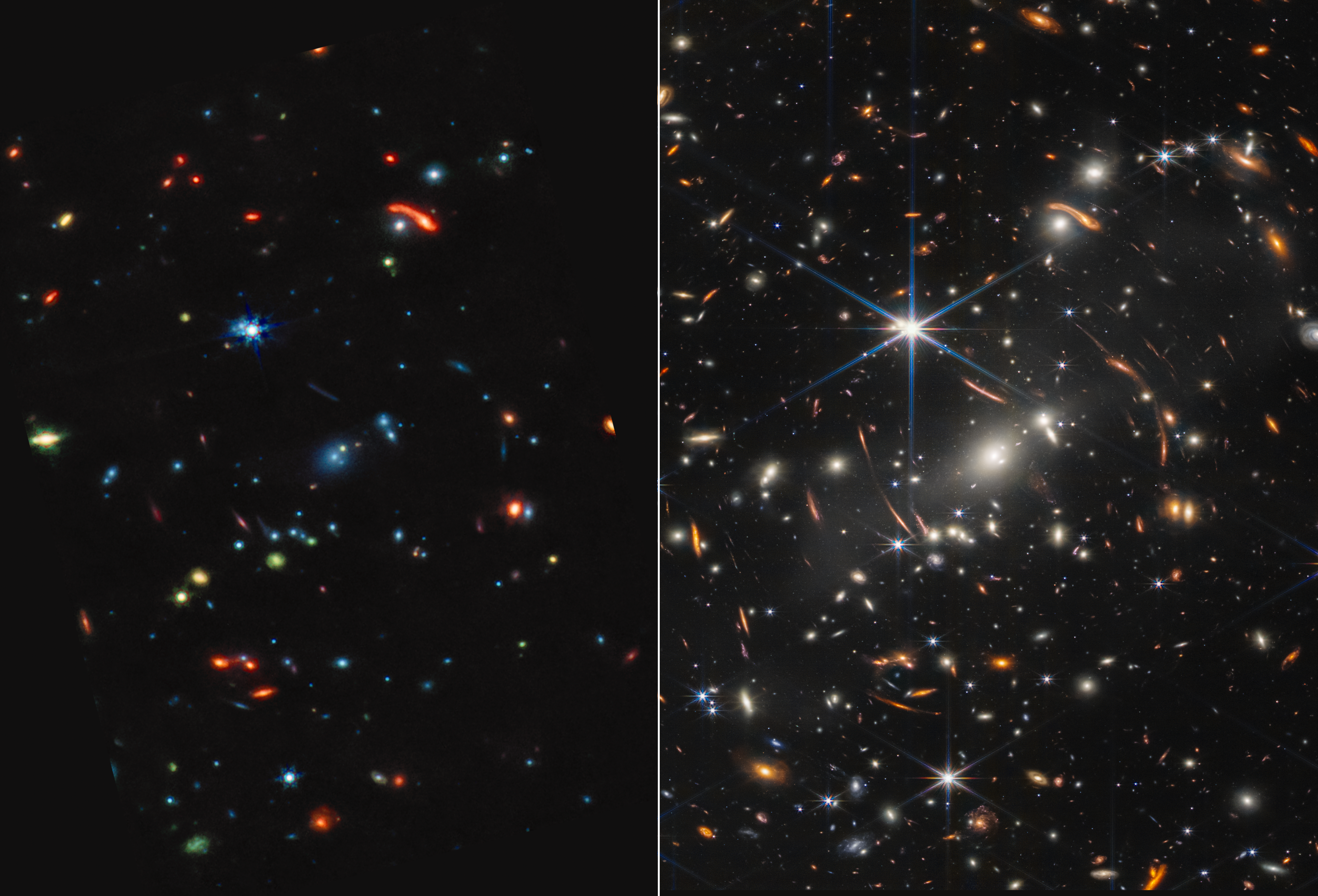
Webb’s First Deep Field (MIRI and NIRCam Images Side by Side)
Galaxy cluster SMACS 0723 is a technicolor landscape when viewed in mid-infrared light by NASA’s James Webb Space Telescope. Compared to Webb’s near-infrared image at right, the galaxies and stars are awash in new colors. Start by comparing the largest bright blue star. At...
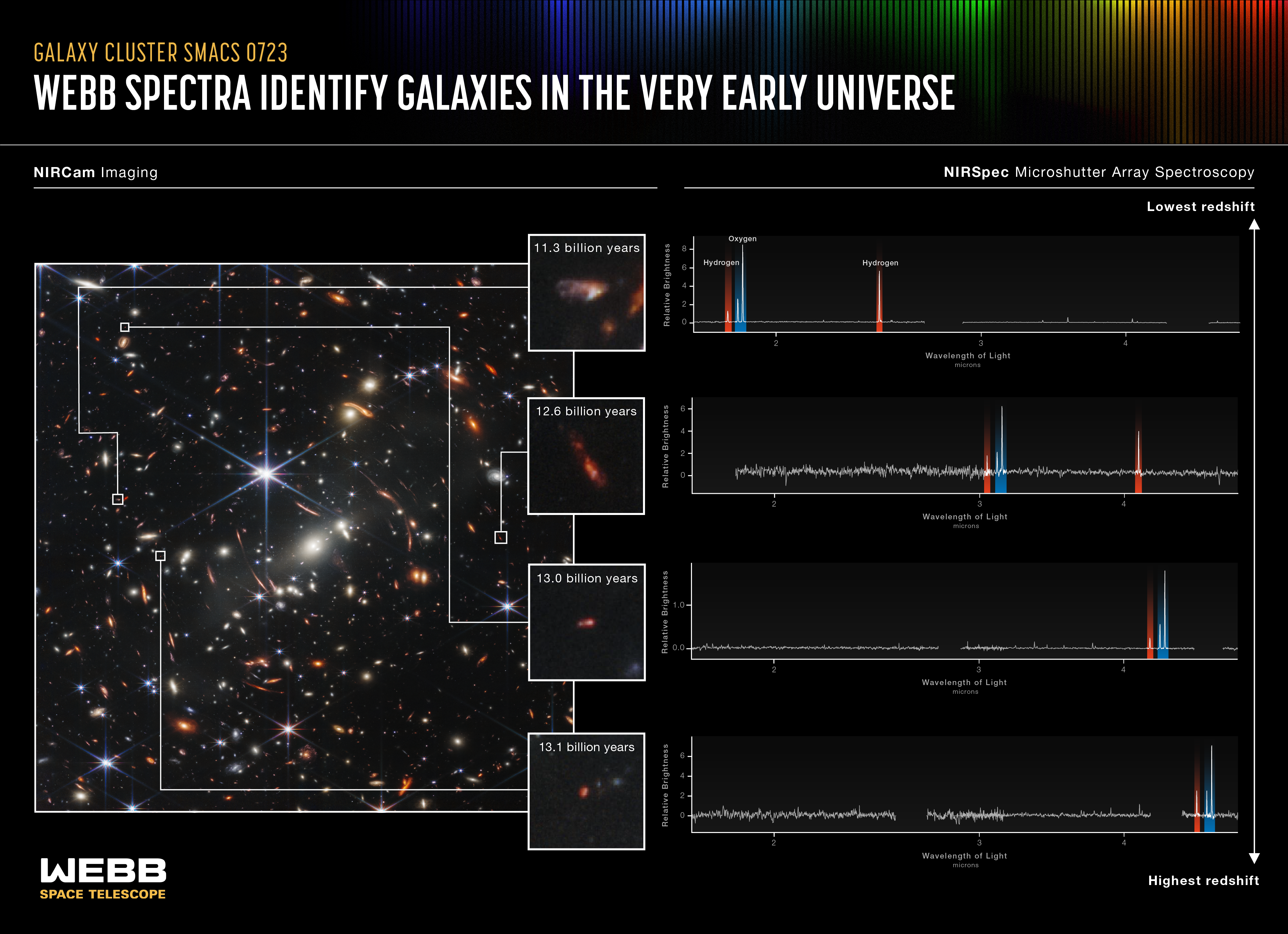
Webb's First Deep Field (NIRSpec MSA Emission Spectra)
NASA’s Webb Telescope has yet another discovery machine aboard – the Near-Infrared Spectrograph’s (NIRSpec’s) microshutter array. This instrument has more than 248,000 tiny doors that can be individually opened to gather spectra (light) of up to approximately 150 individual...
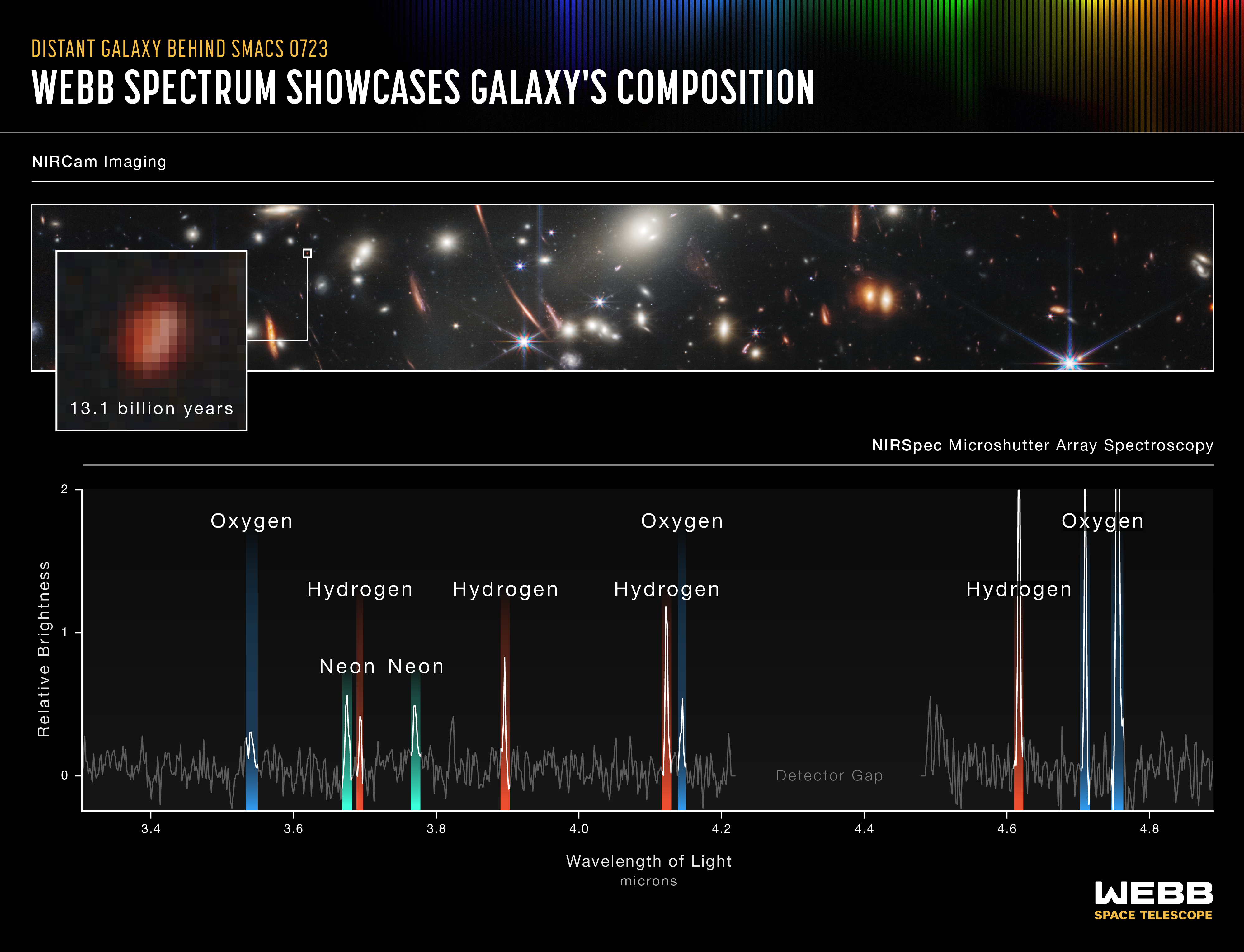
Webb's First Deep Field (NIRSpec Emission Spectrum)
This galaxy emitted its light 13.1 billion years ago. It was captured by Webb’s microshutter array , part of its Near-Infrared Spectrograph (NIRSpec). This instrument is so sensitive that it can observe the light of individual galaxies that existed in the very early universe....
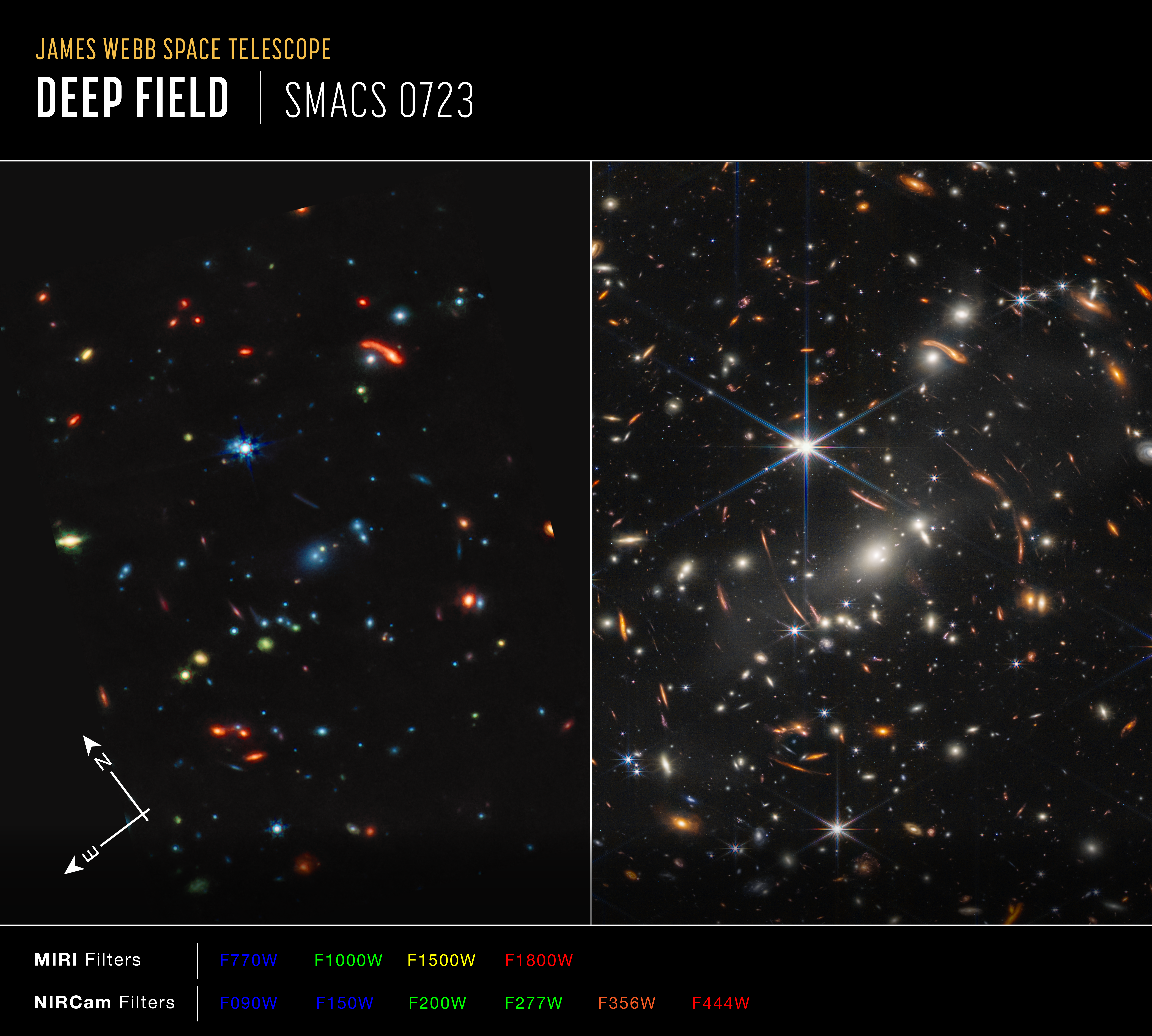
Webb's First Deep Field (MIRI and NIRCam Side-by-Side Compass Image)
Image of galaxy cluster SMACS 0723, affectionately known as Webb’s First Deep Field, captured by Webb’s Near-Infrared Camera (NIRCam) and Mid-Infrared Instrument (MIRI), with compass arrows and color key for reference. The north and east compass arrows show the orientation of...
Share
Details
Laura Betz
NASA’s Goddard Space Flight Center
Greenbelt, Maryland
laura.e.betz@nasa.gov
NASA, ESA, CSA, STScI






























